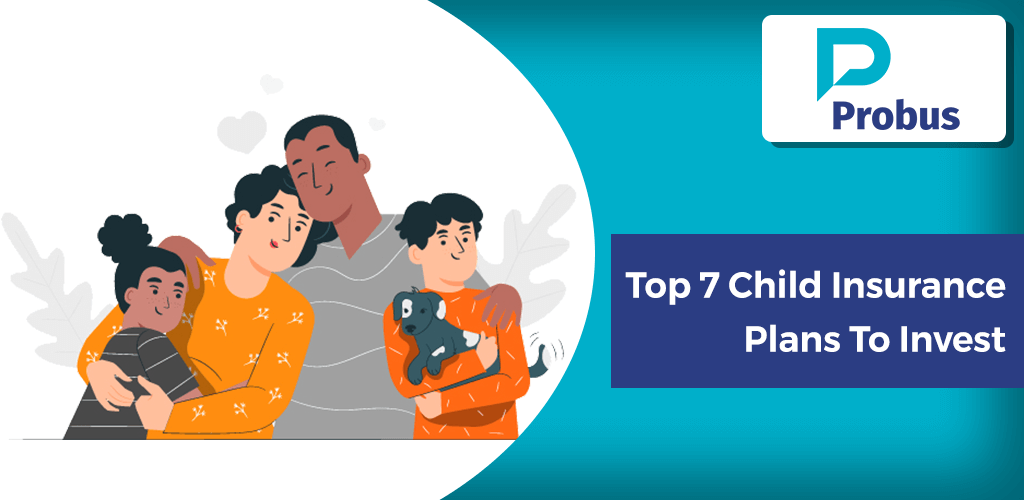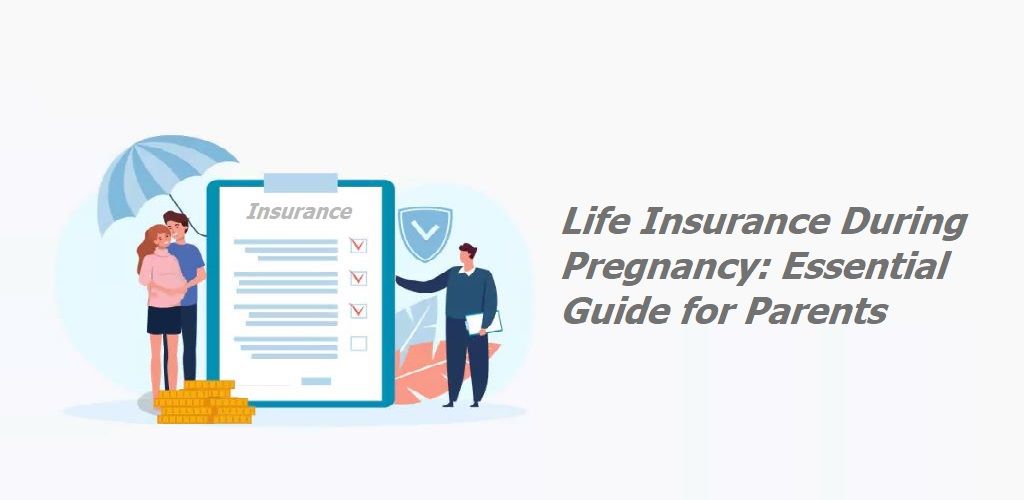The promise of a stable future is the greatest gift you can give to your child. But planning for your child’s future is definitely not an easy task. Many parents want to create a strong financial cushion for their children but they lack sufficient funds in their times of need. Therefore, it is extremely crucial to make the right investment choices at the right time; and one such choice is Child Insurance Plans.
Child insurance plans are a type of life insurance that are made to help you give your child a safe and secure financial future. The plan offers you an investing corpus even if you are not present when it matures. As a result, you are able to leave your child with a fixed fund for the future. As there are a plethora of child insurance plans available in the market, choosing the right one might be troublesome for you. Therefore, in this post, we have listed some of the top child insurance plans that you can consider buying.
Features Of Child Insurance Plans
Below are some of the common features of a child insurance plan:
- Sum Assured: Sum assured is the amount that will be paid out in the event that the policyholders pass away. Most of the time, the sum assured of child insurance plans should be greater than 10 times the insured’s current gross income.
- Premiums: You have the option of paying the premium in one single payment at the start of the policy’s term or in installments. The majority of child insurance providers offer premium collection options like monthly, quarterly, half-yearly, and annual premium collection, which can be set up with standing orders to be credited directly from your bank accounts. The maturity and sum assured numbers you choose will determine the premium amount.
- Policy Tenure: Generally speaking, child insurance policies are designed for youngsters up to the age of 18 or 21, though there are certain plans with a greater age cap. Thus, tenures can be chosen to start at birth and continue until the child reaches a certain age. When the policy matures, the covered person cannot be older than 70 years.
- Maturity: The maturity amount should be selected with the long term in mind. You should consider variables like inflation and interest rates if your child is 8 years old and his policy won’t mature for another 10 years. The monies released may not meet the needs in the future if you neglect to take these aspects into account. Additionally, plans like single premium plans might not offer maturity benefits; therefore, please read the policy’s terms and conditions thoroughly before applying.
- Rider Benefits: You can add specific riders to your child insurance policy to get greater benefits. The three main categories of riders are premium waiver, severe illness, and accidental death and disability. Please verify the policy documentation in this respect since the premium waiver may already be included with your plan. While the accidental death and disability riders pay an additional sum promised in the event of tragic occurrences that result in the insured’s disability or death, the critical illness rider offers coverage for a list of predetermined critical illnesses.
- Premium Waiver Benefit: The fact that premium exemptions are applicable when the insured dies within a certain time frame is a built-in element of child insurance plans. In this case, the recipient will receive the sum insured and the insurer will pay the premium for the remaining term. The maturity amount, as specified in the policy document, will be given at the conclusion of the tenure. If the plan does not automatically include a premium waiver, you should choose a premium waiver rider.
- Segmented Payouts: With child insurance policies, you can decide whether the child will get payment in one single sum or over the course of a year. In such a situation, it will be easier to pay obligations like home payments and college tuition.
- Funds Choice: A child insurance plan, like ULIP, allows a policyholder to choose their preferred investment funds (equity, debt, hybrid, and money market). Moreover, a “Systematic Transfer Plan” and “Dynamic Fund Allocation” are additional options available to you under such plans.
Why You Should Invest In Child Insurance Plans?
If you want to understand the importance of a child insurance plan, you need to dig deeper into its benefits. Here we have jotted down some of the amazing benefits offered by a child insurance policy:
- Creates A Corpus: It’s crucial to have a corpus set aside for your child’s future requirements, and a child insurance plan can assist you in doing so. The plan safeguards your financial plans for your child from going awry in event of death by covering premature death.
- Customization Benefit: Traditional or unit-linked child insurance plans both recognize the value of setting aside money for your child. Because of this, some child plans also provide a variety of add-on riders that broaden the coverage. A rider can be added to a child plan to increase coverage according to the needs of the policyholder.
- High Rate Of Return: Returns on child insurance plans might reach 12 percent or more, which would be higher than long-term inflation. Not only your investment is shielded from deterioration by a child insurance plan, but it also enables your money to grow faster.
- Secures Future Of Your Child: Even after a parent passes away, the child plan keeps operating and fulfills its promise to pay the maturity benefit. When a parent purchases a child plan, they may rest easy knowing that the plan will mature and provide benefits whether they live or die. The child’s schooling or marriage might thereafter be paid for with the help of this benefit. A child plan thus ensures the stable financial future of the child.
- Inbuilt Premium Waiver Benefit: Another unique aspect of child plans is a built-in premium waiver benefit. If the parent passes away during the plan’s term, this benefit will waive all future premiums. As a result, the parent is not only certain to receive a maturity benefit but is also aware that the family would not be required to continue paying premiums for the plan. Benefits would be paid as agreed upon and automatically renew the plan.
- Helps In Saving Taxes: Sample this to learn more about the importance of a child insurance plan. The premiums you pay for the plan are exempt from taxation under Section 80C up to a maximum of Rs. 1.5 lakhs. In addition, the plan’s death benefit and maturity benefit are both entirely tax-free.
- Partial Withdrawal Facility: There are several child insurance plans that permit partial withdrawals. You can make repeated withdrawals from your fund value during the course of the plan by using this feature. Your child will also be qualified for a partial liquidity facility after they become 18 years old.
List Of Best Child Insurance Plans
Here are the top 7 child insurance plans available in India:
Bajaj Allianz Young Assure Plan is a traditional, limited, participating, and regular premium payment endowment plan that is specifically designed to protect your family’s financial future.
Key Features
- The policyholder has a variety of policy terms and premium payment options to choose from. This guarantees that the insured’s family will have access to funds during key occasions like a child’s schooling or marriage, among others.
- The policyholder is provided with Guaranteed Additions (GA), Guaranteed Maturity Benefits (GMB), and bonuses to make sure they get a fair return on their investment.
- There are three choices for cash installments that can be selected depending on the customer’s future financial need.
- Comprehensive insurance protection is provided in the event of the policyholder’s accidental disability or death.
- The coverage provided by the plan may be enhanced with the use of riders available under the plan.
- Female participants in the plan are given discounted premium rates.
| Eligibility Table | |
| Minimum Entry Age | 18 Years |
| Maximum Entry Age | 50 Years |
| Minimum Maturity Age | 28 Years |
| Maximum Maturity Age | 60 Years |
| Sum Assured | Annualized Premium |
2. HDFC Life YoungStar Udaan
This is a participatory and non-linked life insurance plan that aids parents in methodically saving and investing for their children’s education and other significant life milestones. Even when a parent is not present, the plan makes sure that the child’s requirements are fulfilled.
Key Features
- There are various variations of the endowment and money-back HDFC Life Youngstar Udaan plan.
- Depending on their insurance requirements, customers can choose between three different forms of maturity benefits: Aspiration, Academia, and Career.
- Future premiums are not required to be paid under the Classic Waiver form of the plan following the death of the policyholder.
- During the first five years of the investment, Guaranteed Additions accumulate and are paid out at policy maturity.
- The policy terms and premium payment alternatives offered by the plan give you a lot of flexibility as you think about your child’s future objectives.
- You can still obtain insurance protection for the entire policy term despite a short period of premium payment.
| Eligibility Table | |
| Minimum Entry Age | 0 To 18 Years |
| Maximum Entry Age | 55 To 65 Years |
| Minimum Maturity Age | 18 To 33 Years |
| Maximum Maturity Age | 75 Years |
| Minimum Policy Term | 15 Years |
| Maximum Policy Term | ears |
3. Aditya Birla Sun Life Vision Star Plan
Aditya Birla Sun Life Vision Star Plan offers regular and guaranteed rewards that can be used to pay for your child’s education and secure their future even when you are not around.
Key Features:
- At the conclusion of every fiscal year, the plan will pay simple reversionary bonuses, which will be added to your policy on the anniversary of the policy.
- Depending on the actual experience and the current economic conditions, it may also provide a terminal bonus upon maturity or surrender, if early.
- The plan will pay the nominee a death benefit in the tragic event that the life insured passes away within the policy term.
- You will begin receiving Insured Payouts, which are predetermined percentages of the sum assured that you select, starting in the fifth year after the premium-paying term has ended.
- Once your insurance has a surrender value, you are able to borrow money against it. The minimum and maximum loan amounts are Rs. 5,000 and 85% of your surrender value, respectively.
| Eligibility Table | |
| Entry Age | 18 To 55 Years |
| Maximum Maturity Age | 75 Years |
| Minimum Policy Term | For Option A: 16 Years, For Option B: 14 Years |
| Maximum Policy Term | For Option A: 23 Years, For Option B: 21 Years |
| Premium Paying Term | 5 To 12 Years |
| Minimum Sum Assured | Rs. 1 Lakh |
4. Bharti AXA Life Child Advantage Plan
It is a child plan that guarantees reimbursements at significant junctures and waives all future premiums in the event of a tragic circumstance so that the dreams of your child are never compromised. Along with this, you also receive the advantages of non-guaranteed incentives and life insurance, ensuring the long-term goals and objectives of your child.
Key Features
- At the time of the plan’s inception, you can select between the Money Back option and the Endowment option based on your child’s needs and career goals.
- To help your child in a time of need, the nominee will get the higher of or 11 times the base annualized premium in the terrible event that the life insured passes away.
- Subject to the existing provisions, you can qualify for the tax benefits on the premiums paid and benefits obtained. As tax regulations change from time to time, the tax benefits may also change.
- The policy has a grace period of 15 days for monthly mode and 30 days for yearly, half-yearly, and quarterly premium payment modes.
- After the payment of 2 annualized premiums, the policy obtains the surrender value.
- You have the option to reinstate all of your policy’s benefits within five years after the premium’s default due date.
| Eligibility Table | |
| Minimum Entry Age | 18 Years |
| Maximum Entry Age | For Regular Pay: 50 Years, For Limited Pay: 55 Years |
| Policy Term | 11 To 21 Years |
| Premium Payment Term | Same As Policy Term |
| Maximum Maturity Age | For Regular Pay: 71 Years, For Limited Pay: 76 Years |
| Minimum Sum Assured | Rs. 25,000 |
5. LIC’s New Children Money Back Plan
It is an individual, non-linked, participating, life assurance money back plan. Through survival benefits, this plan is specifically created to support the developing needs of children in terms of school, marriage, and other necessities. Additionally, it offers a number of survival bonuses for children who live to the end of the stated lengths as well as risk coverage on a child’s life during the policy term.
Key Features:
- If the life assured survives on each of the policy anniversary coinciding with or immediately following the completion of 18, 20, and 22 years, an amount equal to 20% of the basic sum assured will be payable on each occasion.
- The option to receive the Survival Benefit(s) will be available to the policyholder at any time on or after the due date as long as the policy is still in effect.
- Over the course of the policy’s premium-paying term, premiums may be paid on a recurring basis in the following ways: annually, half-yearly, quarterly, or monthly (via NACH or through salary deduction).
- For the payment of annual, semi-annual, or quarterly premiums, a grace period of 30 days and 15 days for monthly premiums shall be permitted from the date of the first unpaid premium.
- As long as two complete years’ worth of premiums has been paid, the policy may be surrendered whenever desired.
- If at least two full years’ worth of premiums have been paid, and subject to the terms and conditions that the company may from time to time designate, a loan may be obtained under the policy.
| Eligibility Table | |
| Minimum Entry Age | 0 Years (Last Birthday) |
| Maximum Entry Age | 12 Years (Last Birthday) |
| Policy Term | (25 – Age At Entry) Years |
| Minimum/Maximum Maturity Age | 25 Years (Last Birthday) |
| Minimum Basic Sum Assured | Rs. 1 Lakh |
| Maximum Basic Sum Assured | No limit |
6. PNB Metlife Smart Child Plan
It is a carefully created plan by PNB MetLife that is focused on your child’s future and takes care of all of his or her ever-changing needs, such as the rising cost of education, financial planning for his or her extracurricular activities, or marriage.
Key Features:
- The policy will provide a death benefit in the event of the insured’s/ policyholder’s untimely death to cover unanticipated expenses and future planning for your child.
- The Fund Value and any applicable Loyalty Additions will be paid to you by the plan at the conclusion of the policy period.
- You may execute a Partial Withdrawal, which enables you to withdraw funds to address your urgent liquidity needs.
- Based on your willingness to face risks, you can also invest in one of six Unit Linked Funds provided by the plan.
- If you want to benefit the most from market volatility, you can select the Systematic Transfer Option, which enables you to benefit from market ups and downs as well as rupee cost averaging.
| Eligibility Table | |
| Minimum Entry Age Of Insured | 18 Years |
| Maximum Entry Age Of Insured | 55 Years |
| Minimum Entry Age For Beneficiary | 90 Days |
| Maximum Entry Age For Beneficiary | 17 Years |
| Policy Term | 10, 15, & 20 Years |
| Sum Assured | 10 X Chosen Annualized Premium |
7. ICICI Pru Smart Kid Plan
ICICI Pru Smart Kid Plan is specifically designed for the parents who wish to stay a step ahead and plan for their child’s future expenses and leave nothing to chance.
Key Features:
- The plan gives you the chance to build wealth through market-linked returns and the freedom to select from 11 different funds in accordance with your risk tolerance.
- If you pass away unexpectedly, the company will cover all future premiums through Smart Benefit, and when the policy reaches its maturity, your nominee will get the fund value to provide for your child’s future.
- In the event of a tragic incident, the plan provides a lump sum payout to the nominee to cover urgent expenses.
- The plan enables partial withdrawals at any time after the conclusion of the first five insurance years to help cover costs associated with your child’s important educational milestones.
- You have the option to pay once, only for 5, 7, 10, or the complete duration of the insurance.
| Eligibility Table | |
| Minimum Entry Age | 20 Years |
| Maximum Entry Age | 36 To 54 Years |
| Policy Term | One Pay: 10 Years Regular Pay: 10 To 25 Years Limited Pay: For 5, 7 Pay – 10 To 25 Years For 10 Pay – 11 To 25 Years |
How Does A Child Insurance Plan Work?
You must first choose the desired coverage amount. You submit an application to the bank, which will then inform you of the computed premium depending on the selected cover amount. Next, you must choose the type of policy. The two types of child plans are child ULIPS and child endowment plans. While the corporation will invest in the debt instruments in the endowment plan, you will be able to choose which instruments to use for your investments in the ULIP plan.
The next step is to choose between a lump sum payment and ongoing installments. After choosing the frequency of payments, you can start your policy by paying the premium. The company will then pay a portion of the maturity amount to the child each year until maturity if the insured (parents) pass away as a result of any terrible circumstance. All posthumous premiums are exempt from payment. The child will receive the entire cover amount once he/she reaches adulthood. Moreover, the whole cover amount will be handed to the child at the conclusion of the term if the insured lives longer than the policy term. Also, parents may withdraw money from the corpus if they have a mid-term need.
How You Can Get The Best Child Insurance Plan?
Every company has its unique child plans, but the fundamental framework is the same as what was mentioned in the parts above. Before making a decision, you should conduct a thorough study on life insurance for children.
Despite the fact that child insurance policies are inherently identical to one another, there are several technical differences between the packages offered by various companies. You might find better payments from a certain policy, or there are numerous riders automatically available on a product. You can also investigate child plans from various providers by first finding information about organizations selling child insurance products on the website of the Insurance Regulatory and Development Authority of India (IRDA).
Moreover, you should also consider some factors, such as your monthly savings, adequate cover, premium waiver benefit, number of kids you have, market conditions, inflation rates, etc. before purchasing a suitable child insurance policy.
Frequently Asked Questions
Ideally, one should purchase a child plan as soon as their child is born. However, only purchase a child plan once you are familiar with the ideas of costs, savings, inflation, the various kinds of child plans, and the advantages that come with each, to name a few.
You need to have the following documents for buying a child insurance policy:
- Identity proof
- Age proof
- Income proof
- Address proof
- Proposal form
The following are exclusions from the HDFC Life YoungStar Udaan Plan:
In the event that a policyholder commits suicide within a year of dying,
- As long as the policy is still in effect, the nominee of Life Assured will receive 80% of all premium payments made since the policy’s start date.
- The nominee will receive an amount equal to the greater of 80 percent of the premiums that have been paid up to the date of death or the surrender value that is available on the day of death starting from the date of policy revival.
When an insured person passes away, the insurance plan’s benefit is determined by the beneficiary term. A policy may have several beneficiaries. The primary beneficiary is the one who benefits most from the insurance policy.
Bonuses are based on the insurance company’s performance over the course of a fiscal year. They are only compensated when the business is profitable. Bonuses are therefore not promised.







